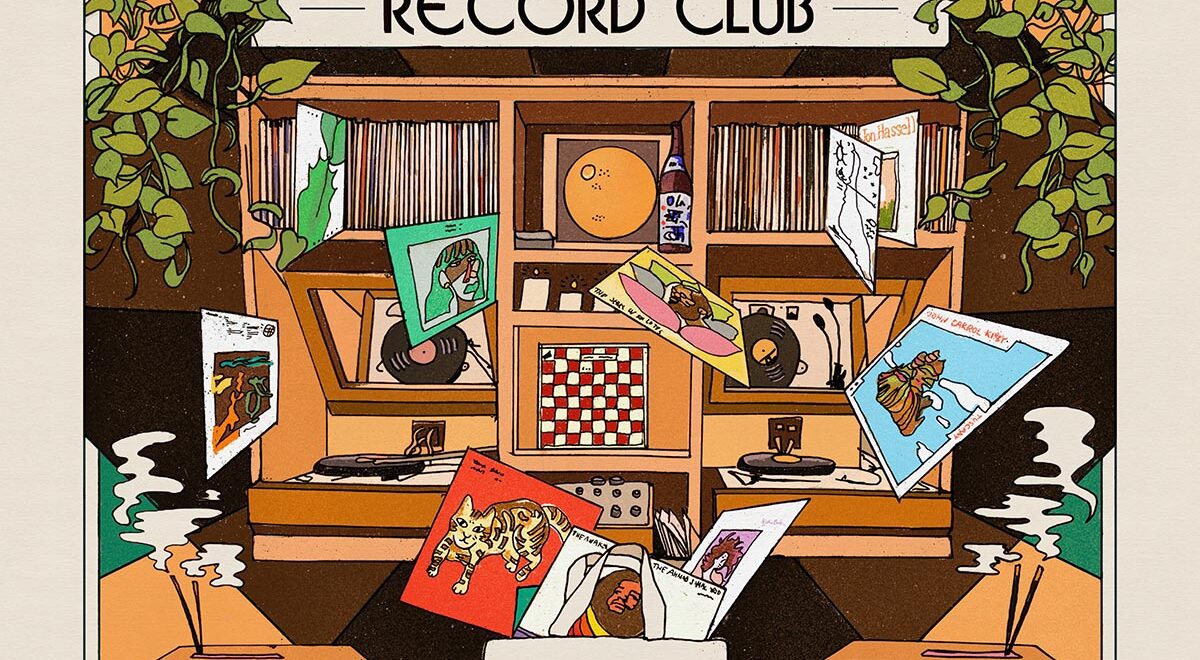The summer is halfway over and you’ve been scrolling for like, what, six weeks straight now? Step away from your phone (after reading this, of course). An analog […]
Sound as Weapon: Hyperdub founder Steve Goodman (Kode9) on sonic warfare and bad vibes

“An exploration of the production, transmission, and mutation of affective tonality—when sound helps produce a bad vibe.”
Next year will mark the singular British label Hyperdub’s 20th anniversary, and it’s fair to say that across those two decades few labels have defined a sound –– and created its own subgenre –– more admirably and mind-blowingly as Hyperdub.
Founded by Steve Goodman, who makes deep, menacing electronic tracks as Kode9, since its inception in 2004 the label has crafted spacial, dub-driven beat tracks that reward focused, high-volume experiences. The kind of stuff that rewired the thinking of impressionable young producers, the consequences of which we’re still benefiting from today. It’s also an imprint driven by sharp aesthetic underpinnings
Here’s one of Kode9’s debut tracks on Hyperdub:
That devotion to sound exploration is due in no large part to Goodman’s thoughtful research and studies on the politics of sound, aural weaponry and the ways in which seemingly harmless tones and waveforms can affect the body and mind.
That understanding offers context for Hyperdub’s discography, most famously in the music of Burial, whose work is commonly filed in the dubstep section (but don’t let that scare you away). It’s hard to understate the way Burial’s early tracks, which starting coming out in 2005, resonated in the underground beat scene.
In 2010, the esteemed publisher MIT Press issued Goodman’s first book. Called “Sonic Warfare: Sound, Affect, and the Ecology of Fear,” it’s a heavy tome about the history and philosophy of using sound as a weapon; reading it will change the way you listen to Hyperdub’s music.
An utterly engrossing, if linguistically academic, book, Goodman tackles concepts and anecdotes regarding “psycho-acoustic correction” used by the FBI in Waco, Texas during the siege of David Koresh’s compound; the way British colonialists in Jamaica used loud horns to spread fear; the Israeli government’s use of sonic booms over the Gaza Strip; “Black Atlantic sonic futurism” and the concept of an “audio virus,” and other memorable explorations.
Content warning: Because this is published by an academic press and Goodman’s a lecturer, the text is dense with ten-dollar words that convey ideas in multi-syllabic rhetoric that reads way more complicated than it actually is. As such, sentences such as the following might require a few reads to digest exactly what Goodman’s saying:
“The production of vibrational environments that facilitate the transduction of the tensions of urban existence, transforming deeply engrained ambiences of fear or dread into other collective dispositions, serve as a model of collectivity that revolves around affective tonality, and precedes ideology.”
That said, Goodman’s treatise offers countless entryways into the philosophy of sound and listening, and the ways in which music and frequencies that we all crave when created and delivered with a desire for human connection can be turned upside down and harnessed to induce pain and violence.
Kode9’s most recent album came out last year. Understanding the depth of his analytical mind will inform the way you listen to it. Called Escapology, it’s a concept album about … well … here are the Bandcamp release notes:
Escapology – Kode9’s first album since 2015’s Nothing – is the first audio document of a wider project, Astro-Darien, ongoing since last year. His most ambitious work yet as a multi-disciplinary artist, Escapology is the soundtrack album to the sonic fiction Astro-Darien …
The music reconfigures Astro-Darien‘s tense, off-world atmospheres into slices of high definition, asymmetric club rhythms, woven through thrilling sound design and vertiginous sonics.
Escapology is just one entry point into of the Astro-Darien universe, which had begun to surface in 2021 as a two-week audiovisual installation on the main dance floor at club space Corsica Studios in South London, and as a multi-channel diffusion on the 50 speaker Acousmonium at the invitation of INA-GRM in Paris, the institution founded in 1951 by the musique concrète pioneer Pierre Schaeffer, composer Pierre Henry and the engineer Jacques Poullin.
Here’s the official video for the track ‘The Break Up.’










